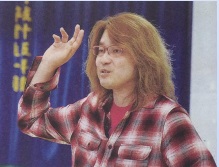通知公告
中科院青年创新促进会学术报告
报告题目:Exploring subatomic nuclei with strangeness with heavy ion beams
报 告 人:Prof. Takehiko Saito
Leader of the hypernuclear spectroscopy group in the Hadron Physics 2 department at GSI, Germany
时 间:2016年7月5日(星期二) 下午15:00
地 点:近代物理所5号楼911会议室

abstract:Hypernclei, sub-atomic nuclei with bound hyperon(s), have been studied already for longer than a half century, in order to deduce the information on the fundamental baryon-baryon interaction with strange-quarks. They have experimentally been studied mainly with secondary meson- and primary-electron beams at CERN, BNL, KEK, J-Lab, LNF INFN and J-PARC. Light hypernuclei have especially been studied by means of different experimental techniques and of a variety of theoretical approaches. Recently, hypernuclei are also studied by using heavy ion beams. The pioneering experiments with induced reactions of heavy ion projectiles has been performed at GSI by the HypHI collaboration. In the first experiment of HypHI, so called Phase 0, employed 6Li projectiles at 2 A GeV bombarded on the graphite target to produce light hypernuclei at projectile rapidity region. Produced hypernuclei were studied by means of the invariant mass method. In the analyses, light hypernuclei, 3H(Lambda) and 4H(Lambda) as well as Lambda-hyperons were successfully observed. The lifetime values of 3H(Lambda) and 4H(Lambda) as well as their production cross section and kinematics were deduced. One of the striking results of the HypHI Phase 0 experiment was to observe the significantly short lifetime of 3H(Lambda) than that of the Lambda-hyperon. Since the binding energy of Lambda in 3H(Lambda) was measured in 60’s to be only approximately 130 keV, it has been believed since then that the lifetime of 3H(Lambda) should be equal to Lambda without any strong experimental evidence, and there are no theoretical calculations to reproduce the short lifetime of 3H(Lambda) observed by the HypHI collaboration so far. Very recently, the shortened 3H(Lambda) lifetime was also observed by the STAR collaboration at RHIC and the ALICE collaboration at LHC. In addition, the HypHI collaboration has observed indication of the existence of an unknown neutral strange nucleus with two neutrons and Lambda, 3n(Lambda), to which all the theoretical calculations are negative for the existence of the bound state. These puzzles have been newly revealed only by the experiments with heavy ion beams. In the lecture, I will discuss on details of the HypHI experiments and the current status of the hypernuclear puzzles as well as on the brief history of the hypernuclear physics. To contribute experimentally for solving these puzzles, new experimental techniques have been proposed by employing FRS at GSI and Super-FRS at FAIR as high resolution forward spectrometer. I will present also the new experimental proposal at GSI/FAIR as well as the perspective of the hypernuclear physics at HIAF in China.








